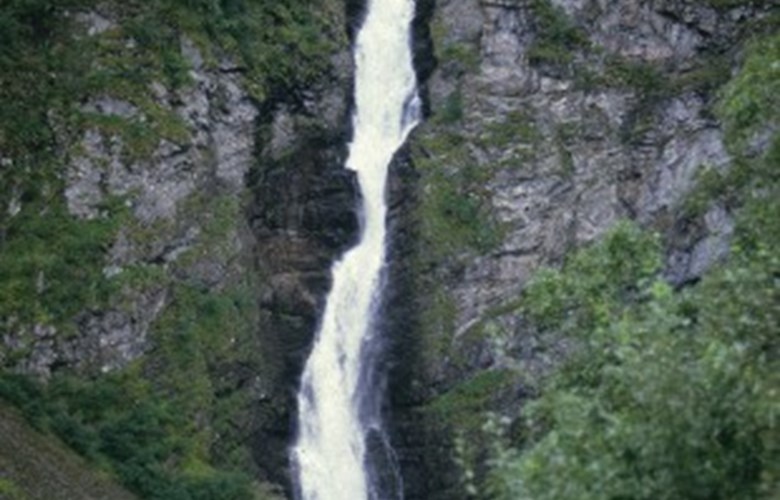Stalheimsfossen
Stalheimsfossen is one of the two waterfalls with a free fall at Stalheimskleiva. In the deep gully the waterfall drops 126 metres in elevation. The best view of the waterfall is from the old road at Stalheimskleiva. Before this road was built in the period between 1844 and 1849, the "royal road" along this waterfall was the main artery to Stalheim. In connection with the municipality of Voss' action plan for outdoor activities, the "royal road" at Stalheimsfossen has been upgraded so even people in wheelchairs can use it. The walk is an attractive activity for young and old who want to experience an impressive river and waterfall. The walk to the waterfall takes about a quarter of an hour.
Sivlefossen
Sivlefossen can be easily seen from the third hairpin curve from the bottom of Stalheimskleiva. This waterfall has a drop in elevation of 240 metres. The gully of the waterfall underlines the narrow profile and marked end of the valley.
The fiddler Sjur Helgeland and the folk tune "Sivlefossen"
A folk tune has been named after the waterfall of Sivlefossen. In the magazine "Spelemannsbladet" (5/1982) Olav Fletre gives an account of Sjur Helgeland and this particular folk tune. This folk tune was formerly called "Fossegrimen" (the water-elf) until the death of the writer Per Sivle, but in order to honour the deceased writer, Sjur Helgeland - second cousin of Per Sivle - chose to name the folk tune after him.
Sjur Helgeland has revealed how the tune came about: "Many fiddlers were assembled at Lærdalsøyri and had been playing for several days. We played day and night and I was desperately short of sleep. This could not go on so I took my belongings, walked to the quay and took the first boat and headed home for Gudvangen. Then I walked up the valley on a fine day filled with springtime activities. When I had climbed halfway up the steep road called Stalheimskleivi I felt a sudden need to sleep. I left the road and walked into the fine birch forest and by the waterfall of Sivlefossen I lay down and slept for a long while. When I woke up, I found my fiddle and the tune came to me just like that".





